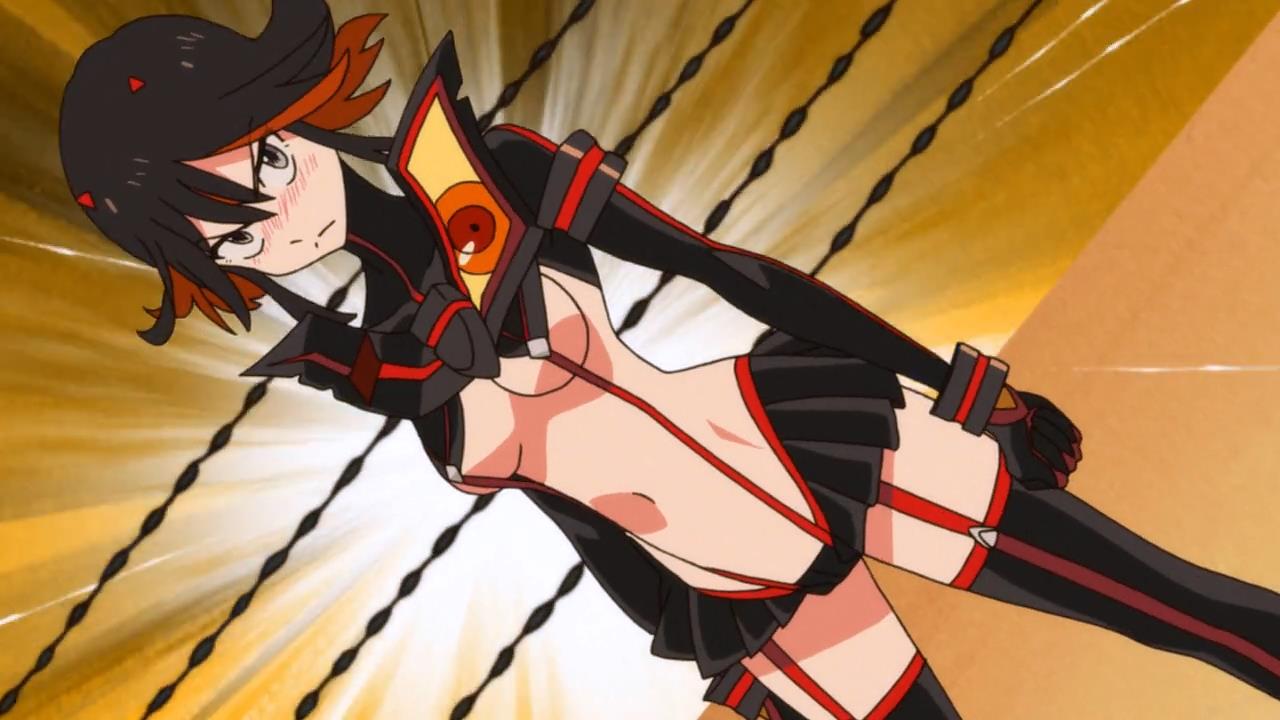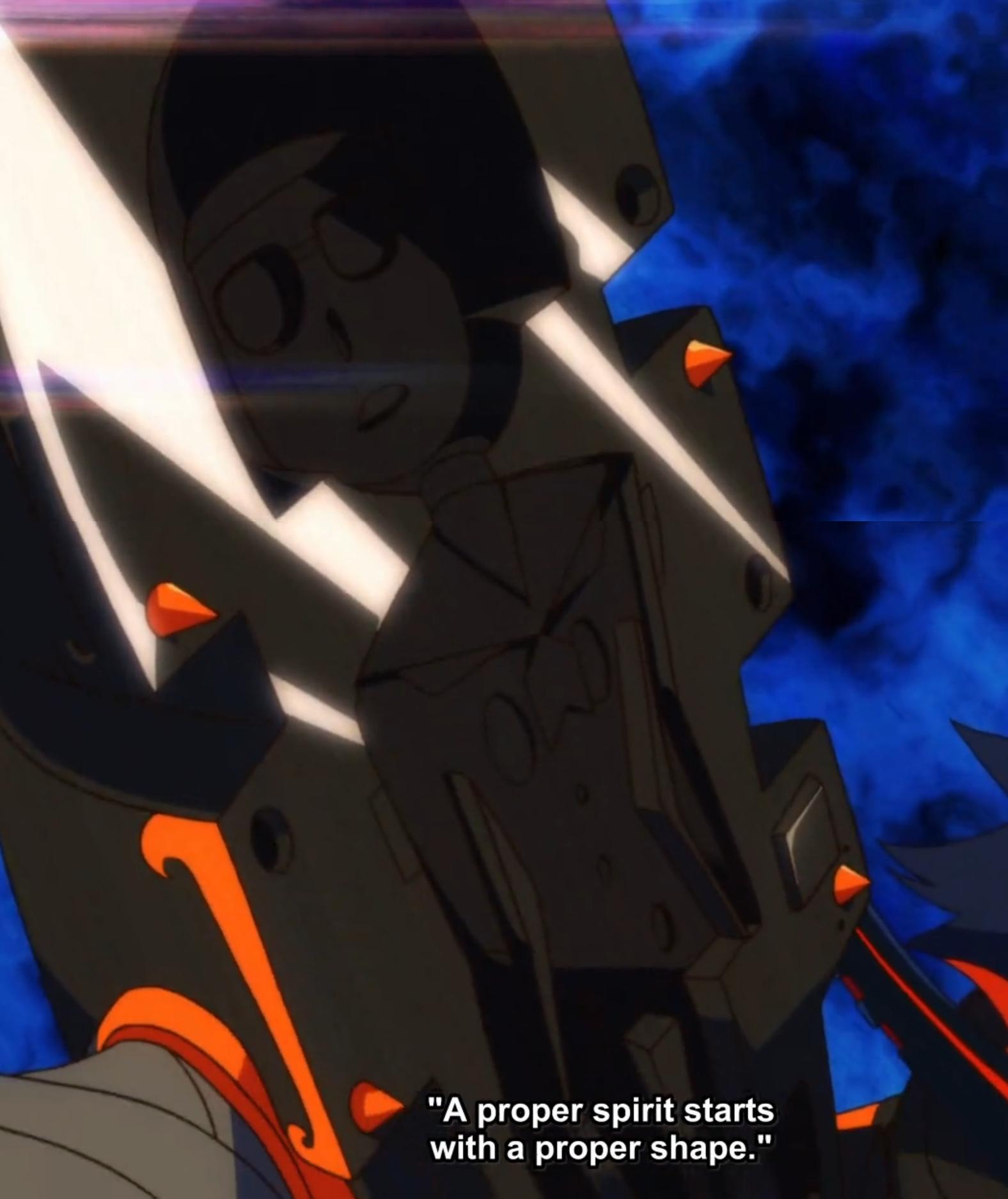Kill la Kill and the Male Gaze: Fanservice vs. Feminism
Anime has long been criticized as being a tad misogynistic. Most of it is aimed at the male otaku demographic and as such is full of scantily clad women flashing their underwear for a voyeuristic audience’s benefit. Sexual humor is common even in anime meant for children with Brock in Pokémon and Master Roshi in Dragon Ball representing only a fraction of perverted anime characters played up for laughs.
One of the culprits of this was the highly male-centric Tengen Toppa Gurren Lagann. The show centered around giant robots killing each other with drills and was one of the most over the top fanservice anime ever made. Every episode had a little bit of T’n’A and a heaping helping of nonsensical robo-pummeling to keep fans satisfied. Kill la Kill was released as a sort of spiritual sequel to Gurren Lagann. With director Hiroyuki Imaishi and writer Kazuki Nakashima both reuniting to give us a new story with a mainly female cast, many fans were skeptical. We all assumed it would be chock full of exposed midriffs and all manner of jiggles for the male viewing pleasure.
And we weren’t wrong. Kill la Kill follows Ryuko Matoi, a teenage girl who fights evil by wearing nothing but suspenders, a mini skirt, and stilletos. The story begins as Ryuko transfers to the Orwellian horror that is Honnouji Academy. The school is run by the tyrannical class president and kept in a rigid hierarchy through Goku uniforms, magical garments that grant their wearers amazing powers. Ryuko seeks to avenge the death of her father and does so with the use of her own magical uniform named Senketsu. Senketsu is a symbiotic life form that drinks Ryuko’s blood and transforms from a sailor uniform to a burlesque, extremely revealing outfit that allows her to fight but leaves her teenage girl body exposed.
At this point many feminists and women might be seriously offended. It seems like just another show that flaunts women’s bodies for mindless fighting and fanservice. But underneath the admittedly sexist exterior, could there be some themes and ideas that are actually feminist?
The fascinating thing about Kill la Kill is that its goals and themes seem to be in direct conflict with its design and presentation. Throughout the first half of the show, the exaggerated violence and insanity of Honnouji academy is used as a representation of the struggles girls face in high school. At Honnouji popularity directly corresponds to power and prestige and the only way to rise through the ranks is to form clubs. The class president at the top rules over everyone below with an iron fist. The hierarchies of Honnouji are the same as any Japanese high school. These social structures are hyperbolized in classic anime style to give scale to normal teenage problems. With this analogy in mind, its natural to extend it to the revealing outfits the characters wear. Ryuko is initially unable to use the power of her clothing because she is ashamed of the judgement of her peers. It is only when she is able to “get naked” and not be ashamed of her body that she can find the strength to defeat her enemies. This isn’t a sexist idea, but a feminist one. The show is saying that girls shouldn’t be ashamed of their own bodies because of society.
The metaphor truly comes to a head in episode nine when Ryuko faces the disciplinary committee leader Gamagori. He chastises Ryuko for her obscene and lewd outfit, saying that it will corrupt the other students. Then he literally pulls out a giant mold of what he calls a “model student,” and attempts to force Ryuko into the proper shape. Much like real schools try to punish women for wearing clothing they find to be “provocative.” Most of the show’s intended audience had probably never seen a media representation of the dangers of slut shaming and certainly not in anime. And despite the rampant fanservice, the message still conveys effectively the way it feels to be punished for the way you look.
So therein lies the issue with saying Kill la Kill is or isn’t a feminist work. While it does make an effort to correct injustices against women and to show a predominantly male audience the struggles of female adolescence, it does so through use of imagery that exploits the female form for fanservice. This also represents a prime example of the male gaze. The male gaze is a feminist term to describe works that showcase female characters but from an inherently male perspective. While there may have been a female staff member here or there, Trigger studios is run entirely by men who are certainly getting as much enjoyment out of their own work as their intended audience. While it may help the path to gender equality to have these types of feminist messages in an anime format, it clearly hurts the same cause to portray women in such an overly-sexualized, male-oriented way.
It’s much the same issue that the western Superhero has been experiencing lately. Comic books have always been far more popular with males and so Superheroines have always been scantily clad and heavily catered to the sexual preferences of its readers. Creators defend these choices by saying that the heroines are strong and self-reliant, making them feminist figures. However, these super-powered sex objects often lack defining character traits other than simply being badass. This is where Kill la Kill differs.
The characters of Kill la Kill aren’t strong solely because they fight to the death with swords. They each stand on their own as unique and developed human beings. Ryuko’s struggle to avenge her father as well as her journey to survive in the cruel high school environment are well executed. Her sexuality isn’t played up for laughs. Neither is her femininity. It is never suggested that her sex in any way inhibits her abilities. The strong female characters in Kill la Kill and the feminist message it supports help to balance out the pervasive male gaze. Whether this makes it a true feminist work is up to your individual opinion. When all is said and done though, the show’s power ballad soundtrack says everything. It speaks to the young women who are watching and urges them in plain Engrish, “Don’t lose your way.” Even if the barriers to gender equality are great, we can at least try to promote empowering messages in the shows we watch.




nailed it.
I found nothing empowering about that anime.
Except that society shouldn’t be sexualizing 15 year girls against their will. Ryuko was forced to wear Senketsu against her will; their first encounter was analogous to rape. The embarrassment she feels at being near-naked in public is understandable. Yet the show suggests that the solution is for women to “get over it” because it’s “empowering.” That argument is deceptive and harmful to real-world women.
As a character, Ryuko is barely given any backstory and her sexy fighting mainly exists for the benefit of male viewers. That’s fine, I get that men like to oogle at sexy underage girls. But don’t try to sell it as “feminist.” Don’t piss on my leg and tell me it’s raining.
Nothing about this show is empowering to young girls. We want to be respected for our minds.